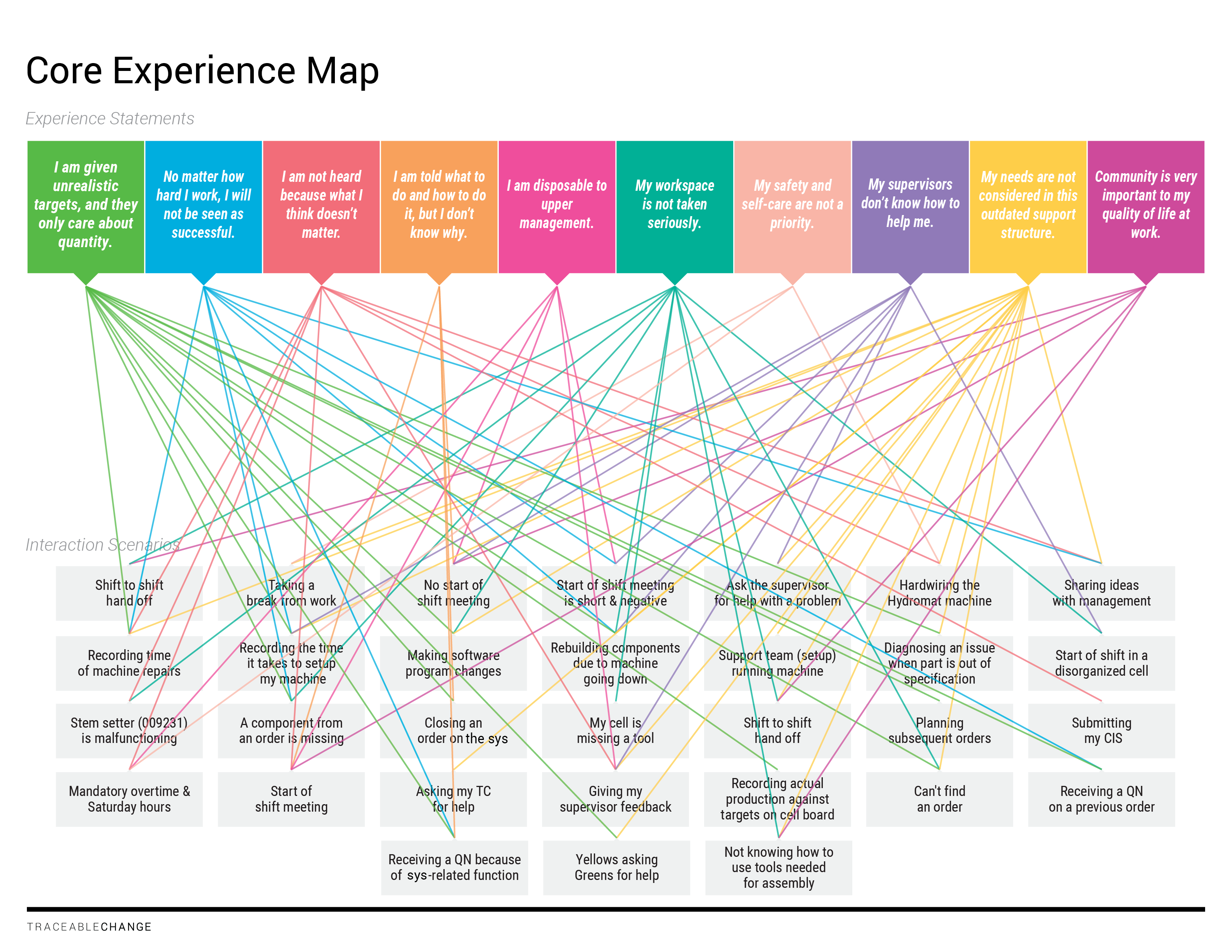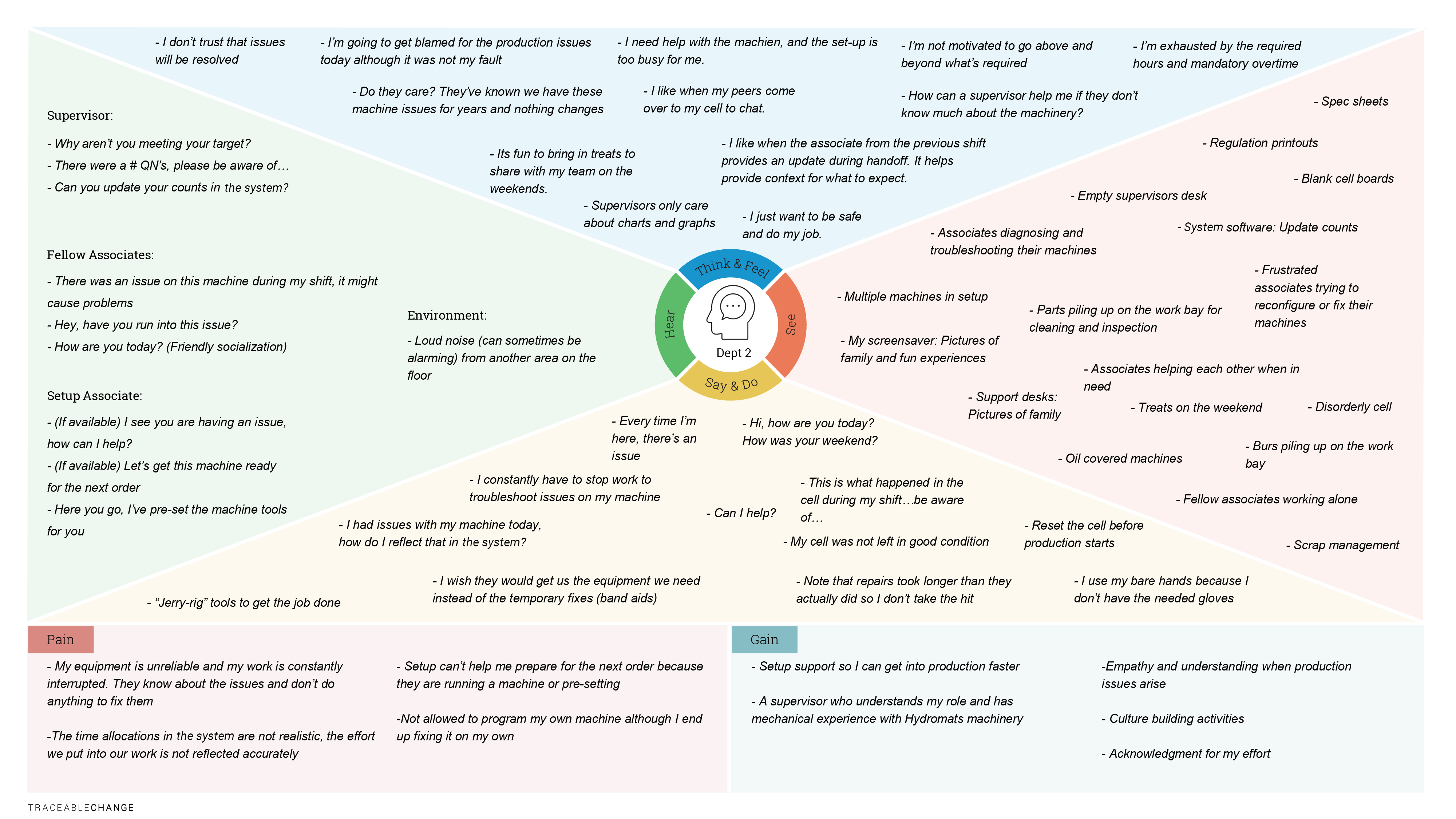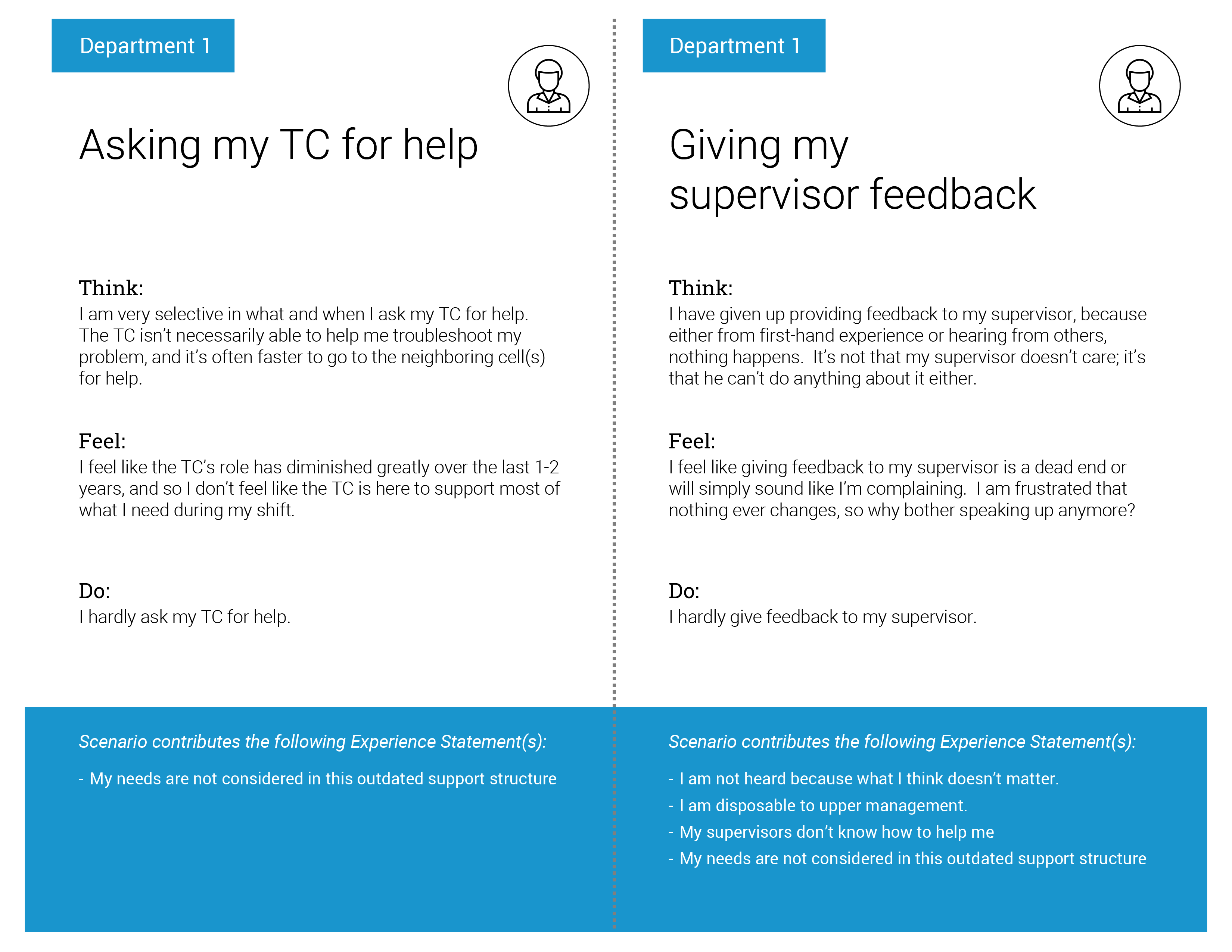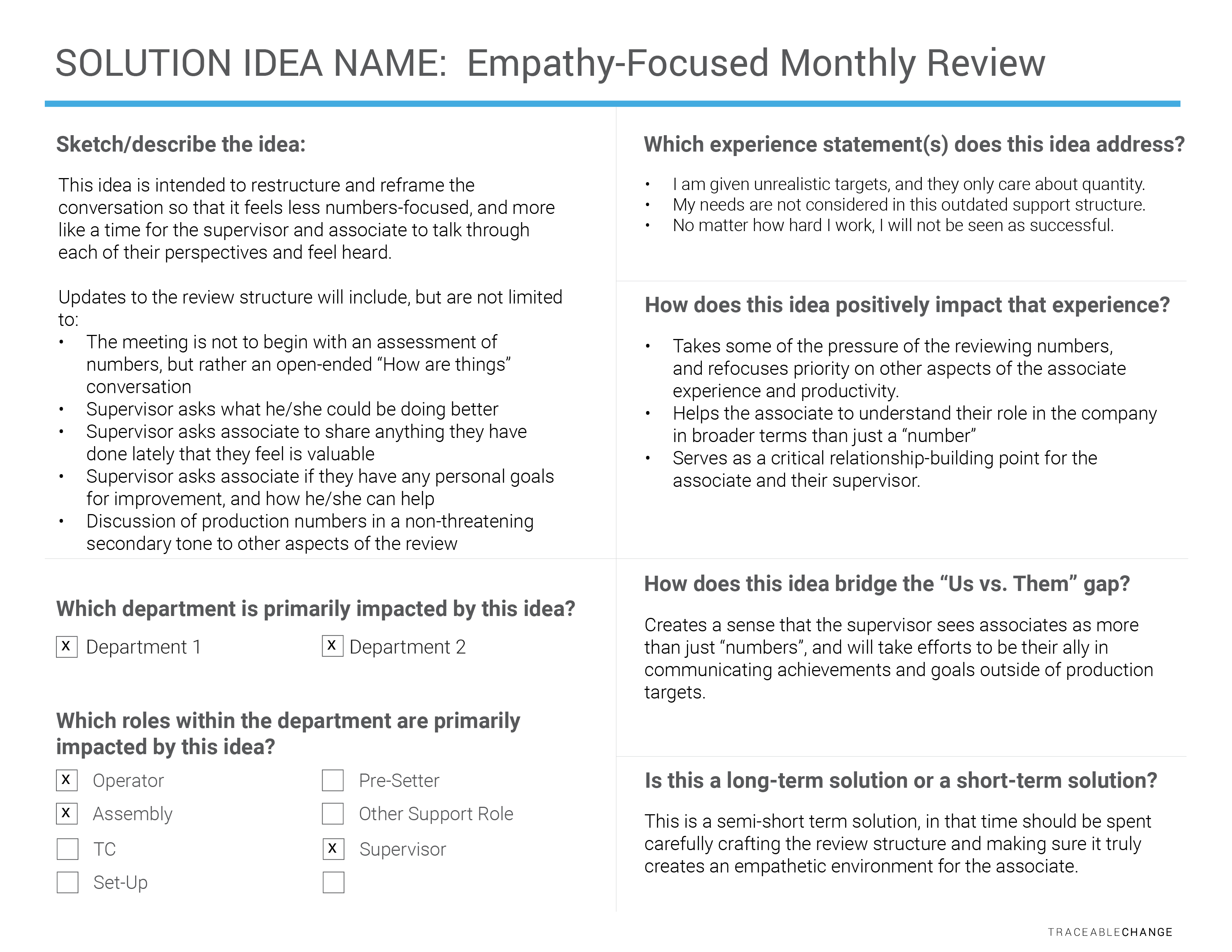The Tools
Psychological Modeling
Our findings unveiled a very complex system of initial dissatisfaction exacerbated over time by triggering events. These events created and continued to build the employee-to-employee story around issues in the workplace. In order to help the client understand and act on triggering events moving forward, we integrated key pain points into an illustrated core belief model.











